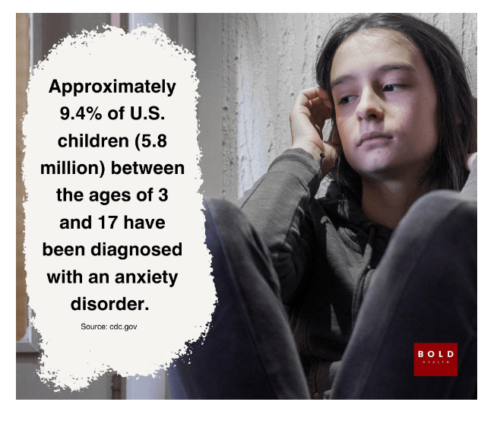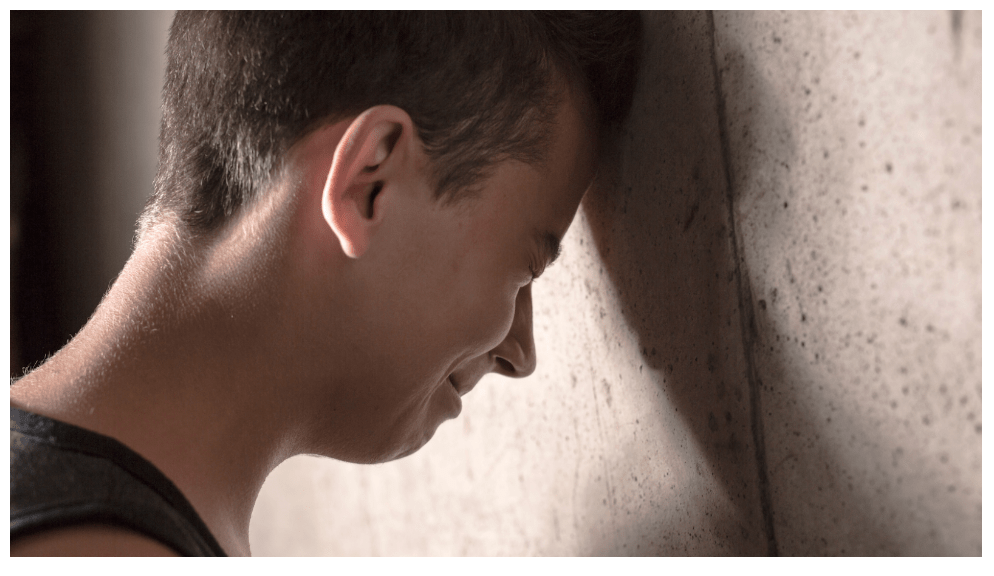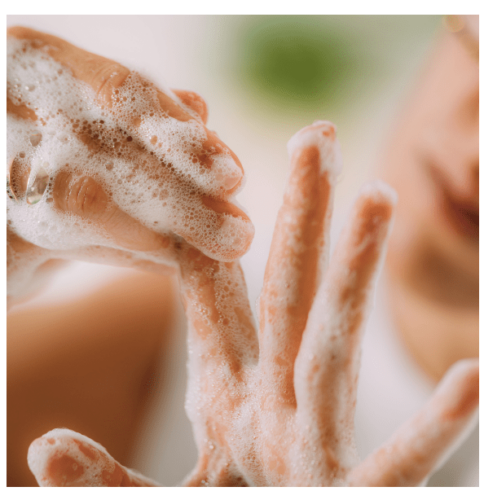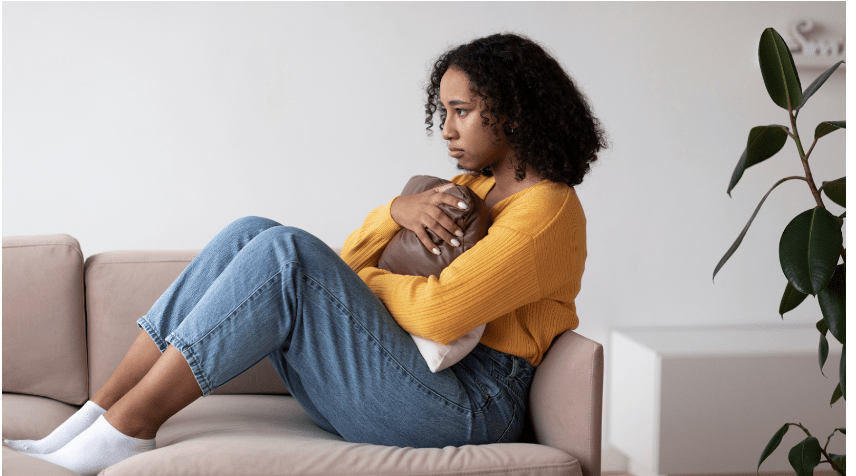

What Are the Most Common Anxiety Disorders in Teens and Adolescents?
Experiencing anxiety from time to time is common in adolescents and teens. (Not to mention adults.) But what about when anxiety goes beyond the typical worrying about school, friends, or what they look like? What if your teen or adolescent starts behaving differently to the point where they withdraw from society, appear restless, and express several fears and worries regularly?
If that’s the case, they may be dealing with teen anxiety. Experiencing any form of anxiety is no walk in the park, and watching your child struggle with it can be very challenging. The good news is that if you are cued into your teen or adolescent and can recognize when things start going sideways with their mental health, there are plenty of effective treatment options.
First things first, however. As a parent or caregiver, you should first be aware of the several types of anxiety disorders in teens and adolescents and what they may look like. When you arm yourself with as much information as you can about anxiety disorders in teens, you’ll be better equipped to get them the help they need.
Anxiety Disorders in Teens and Adolescents
Just like any other mental health disorder, anxiety disorders don’t discriminate based on age. Teen anxiety is a real thing and needs to be addressed before the symptoms get worse and severely negatively impact their lives. Sometimes, it can seem like teen anxiety comes out of nowhere, but there are likely genetic, biological, and situational factors adding to their increased anxiety. Recognizing that your teen is at risk for developing any of the following common anxiety disorders is crucial to their mental health.

Here are some of the most common adolescent and teen anxiety disorders to watch for:
Generalized Anxiety Disorder (GAD)
If your teen or adolescent struggles with generalized anxiety disorder, they’ll experience excessive worry and anxiety about many things in their life. While some amount of anxiety may be considered typical, if their worry, fear, anxiety, and stress are more intense than the situation calls for, they may have GAD.
Some common symptoms of generalized anxiety disorder in teens include:
- worrying about things before they happen
- constant thoughts or fears about their safety or the safety of their parents
- frequent stomach aches or headaches
- sleep issues
- worry when sleeping away from home
- extreme fatigue
- being easily startled
- grouchy or irritated
- inability to relax
- tension or muscle aches
Social Anxiety Disorder (SAD)
Affecting approximately 9.1% of U.S. adolescents, social anxiety can be very disruptive to your child’s life. Feelings of intense fear and anxiety in social situations characterize this anxiety disorder. If your child struggles with this teen anxiety disorder, they will likely try to avoid social interactions out of fear.
They tend to worry that others will judge them, even if that’s unlikely. SAD often results in your child remaining isolated, having extreme anxiety in social situations, and having difficulty forming relationships.
Symptoms of social anxiety may include the following:
- fear of being judged by others
- irritability
- fear of unfamiliar places or situations
- fear of being embarrassed
- hypersensitivity to criticism
- rapid heartbeat
- panic attacks
- school refusal
- nausea
- sweating
- difficulty establishing or maintaining relationships

Panic Disorder
This teen anxiety disorder typically occurs when your child already struggles with some form of anxiety. If your child has panic disorder, they consistently suffer from sudden, severe panic attacks. Typically, the panic episodes are very intense but short-lived.
However, while panic attacks may last only a few minutes, the effects can be felt throughout the rest of the day. After a panic attack, they may feel shaky and worried about another one occurring without notice.
Panic disorder is disruptive and uncomfortable, but it is highly treatable. When you partner with a quality mental health care professional like our team at BOLD Health, we can curate the ideal panic disorder treatment program tailored to their needs.
Obsessive Compulsive Disorder (OCD)
If your child or teen struggles with OCD, they can’t seem to stop themselves from worrying about specific things, no matter how much they’d like to. These constant worries compel them to certain repetitive behaviors.
The term “obsessive-compulsive disorder” refers to your child “obsessing” about worrisome topics, leading them to “compulsions” or repetitive, ritualistic behaviors in an attempt to prevent something terrible from happening.
Some of the most common OCD obsessions in children and teens include the following:

- a need for symmetry and order
- fear of contamination
- lucky and unlucky numbers
- religious obsessions
- preoccupation with body wastes
- fear of dirt and germs
- fear of illness or harm coming to themselves or others
- sexual or aggressive thoughts
Some of the compulsions you may see in your child with OCD include the following:
- ordering or arranging objects
- cleaning rituals
- touching rituals
- rituals to prevent harm to themself or others
- repeating things like going in and out of doorways, turning on and off light switches, etc.
- repetitive grooming rituals like showering, teeth brushing, and hand washing
- checking that doors are locked repeatedly
Post-Traumatic Stress Disorder (PTSD)
Children and teens who have experienced a traumatic event may develop post-traumatic stress disorder (PTSD), which is a troublesome and exhausting teen anxiety disorder. Trauma can come from any number of experiences, including sexual, verbal, emotional, or physical assault, divorce or separation, a traumatic accident, losing a loved one, etc.
PTSD may present itself differently in children than it does in adults. If your child is on the younger side, under 12 years old, they may not experience as many flashbacks or trouble remembering parts of their trauma as adults might. However, they may mimic instances of their trauma while playing or think they can prevent future traumatic events by looking for warning signs.
If your child is older, their PTSD symptoms begin to resemble adult symptoms, but potentially with more impulsive and aggressive behaviors.
Some of the most common symptoms of PTSD include the following:
- repetitive thoughts of the traumatic event
- nightmares
- flashbacks
- irritability and angry outbursts
- attempts to avoid anything reminding them of the event
- hyper-vigilance
- difficulty concentrating
- exaggerated startle response
- sleep issues
- low self-esteem
- feelings of guilt or shame
- depression
- feeling emotionally numb

Separation Anxiety Disorder
While you may think separation anxiety only affects young children, it’s also a recognized anxiety disorder in teens. Yes, it is more prominent in children 18 months to three years old, but teens can feel it, too.
Separation anxiety disorder in teens means your child experiences panic and distress when separated from you as the parent or caregiver. Some of the symptoms of separation anxiety disorder in teens include the following:
Selective Mutism
This is one of the less frequently heard about anxiety disorders in teens and adolescents. It is characterized as the inability to speak in specific social situations despite having the ability to speak in other settings. If your child struggles with selective mutism, they may not be able to talk to unfamiliar people, causing significant distress and panic.
Some signs of selective mutism include:
- difficulty speaking or responding to others not in the immediate family
- looking away or lowering their voice when “strangers” talk to them
- avoiding activities that would make them the center of attention
- becoming distressed and unable to speak when not with their parents or caregivers
As you can see, there are several anxiety disorders in teens you should be aware of so you can recognize if they need professional help.
The good news is that all of these teen anxiety disorders are highly treatable!
The sooner you get help for your adolescent or teen, the sooner they can learn new ways of coping and overcome their troublesome anxiety symptoms.
- excessive distress when they part with a parent or attachment figure
- overwhelming fear that something bad will happen, causing permanent loss of a loved one when they are apart
- fear of getting kidnapped, falling ill, or getting lost when separated from a parent or attachment figure
- fear or refusal to sleep away from home
- uncomfortable physical symptoms like headaches, nausea, and vomiting when they are separated or anticipate separation from a parent or caregiver
Choose BOLD Health for High-Quality Anxiety Treatment in San Diego
We understand how challenging it is to have an adolescent or teen struggling with anxiety. But we’re here for you. Our team of experienced clinicians includes child and teen psychiatrists in San Diego who are ready and willing to help you and your child through their anxiety struggles.

At BOLD Health, we take a unique, holistic approach to helping our clients through their most challenging mental health issues. We’ll take the time to get to truly know and understand your child – what makes them who they are and why they are struggling with anxiety. This way, we can design the perfect teen anxiety treatment in San Diego tailored to their individual needs.
Their anxiety treatment with one of our teen psychiatrists in San Diego may include one or more of the following:
- individual therapy
- group therapy
- medication management
- intensive outpatient program (IOP in San Diego)
- relaxation techniques
Anxiety is disruptive to your child, and they deserve to live an enjoyable and fulfilling life without having to deal with such troublesome symptoms. Contact us today to learn more about our options for anxiety treatment in San Diego with one of our incredible teen and adolescent psychiatrists.


